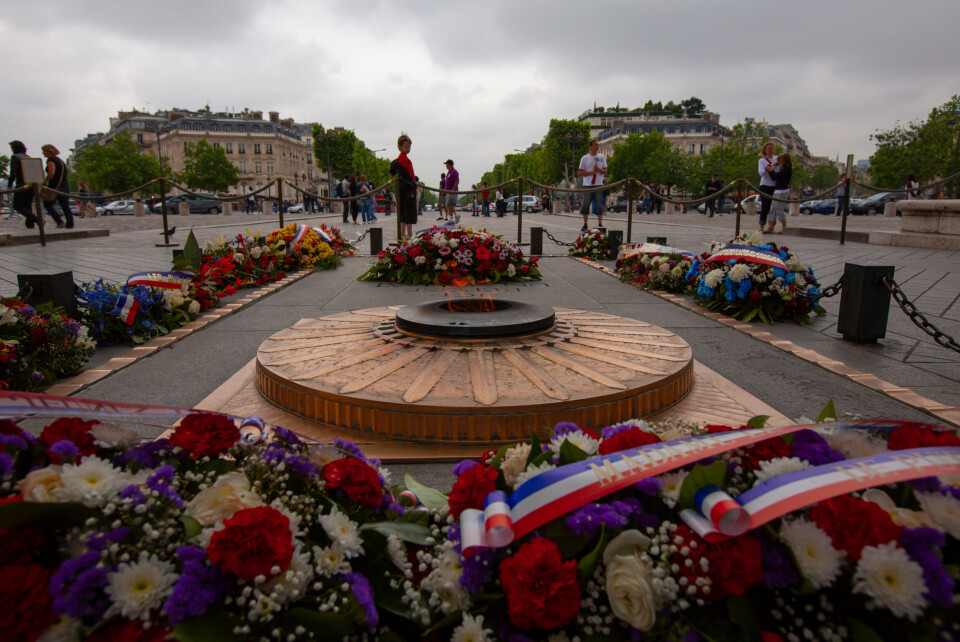-
Know your cheeses and their seasons: which to eat in France in February
Cow’s milk cheeses dominate as winter comes to an end
-
Films and series to watch in February to improve your French
Every month we outline good film and TV series to improve your language
-
Unveiling hidden stories of World War One found in French home
After finding a shoebox of postcards sent to ‘Marie’ by soldiers, a British retiree hopes to curate them for posterity
What is the history behind Paris’s Tomb of the Unknown Soldier?
The coffin containing the body was chosen by a 21-year-old soldier who had served at Verdun

France’s Tomb of the Unknown Soldier was in the news at the weekend – the monument has an interesting history, dating to just over a century ago.
The tomb, located under the Arc de Triomphe in Paris, was in the spotlight over President Emmanuel Macron's decision to temporarily fly the European flag there to celebrate France's rotating presidency of the European Union for the next six months.
Read more: Political storm over EU flag at Arc de Triomphe baffles many
It contains the body of a solider who died in World War One and was recognised as French.
The original idea is said by the Defence Ministry to have come from the president of the Rennes branch of military remembrance charity Le Souvenir Français, who suggested picking the body of a solider who died in battle but could not be identified, so as to honour all such soldiers who have died for France over the centuries.
It was supported by the press, and adopted by MPs in 1919. There was debate as to the location, with some suggesting the Panthéon, however veterans’ associations supported the Arc de Triomphe.
Then Pensions Minister André Maginot, himself a war veteran, chose the underground military base Citadelle de Verdun for a ceremony to choose the soldier's body on November 10, 1920.
The remains of eight soldiers from different battle grounds were brought in oak coffins and one of the soldiers designated to guard them, 21-year-old Auguste Thin. was invited by Mr Maginot to choose one by placing a bunch of lillies on it.
"I was chosen because I was the youngest enlisted 2nd class soldier and a veteran of the regiment of Verdun, the 132nd RI,” Mr Thin explained at the time.
Out of the line of coffins, he chose the sixth, saying later that he picked it because his military unit was the sixth, and six was also the number obtained by adding up the individual figures of his regiment’s number, 132.
Mr Thin was later awarded the French Legion d’honneur by former Socialist president François Mitterrand in 1982 at the Arc de Triomphe, months before he died.
"The coffin arrived at the Arc de Triomphe on November 11, 1920, where it first stayed in a room before being buried under the Arc on January 28, 1921," said Quentin Bendavid, technician of the cultural services of the Arc de Triomphe, in a video on Youtube.
The tomb is composed of a slab of granite from Vire in Normandy that bears the epitaph: “Here lies a French soldier who died for the Fatherland 1914-1918”, surrounded by 18 small pillars intertwined with chains that frame what the veterans call ‘the sacred slab’.
To make sure the tomb was remembered, a journalist suggested in 1923 that an eternal flame be lit there. It was lit on November 11, 1923, by Mr Maginot, then War Minister, and has never gone out. It is revived each day in a ceremony at 18:30.
The identity of the Unknown Soldier has never been formally given.
As stated above, Francis Simon, a printer and president of a local section of Le Souvenir Français, is widely regarded as the person who came up with the idea, though this is disrupted by World War One historian Erwann Le Gall, from Brest University, who told Ouest France it is “absurd” to suggest he came up with it on his own, and that the idea had no doubt been “germinating” earlier.
The Arc de Triomphe has been in the news on several occasions in recent years having been both tagged by gilets jaunes protestors during demonstrations and then wrapped with a silver-blue fabric by artist Christo in 2021.
Related articles
Did you know? First WW1 Tomb of the Unknown Soldier has French origins
Rediscovered WW1 tunnel in France ‘still smells of gunpowder’
Family of US soldier who left Normandy church message in 1944 found
























